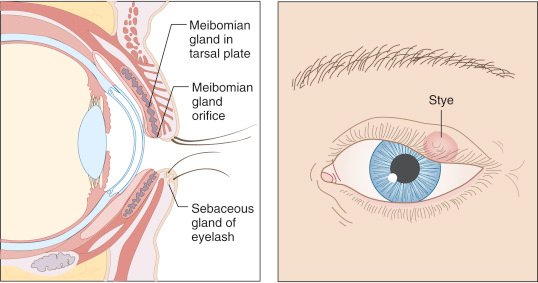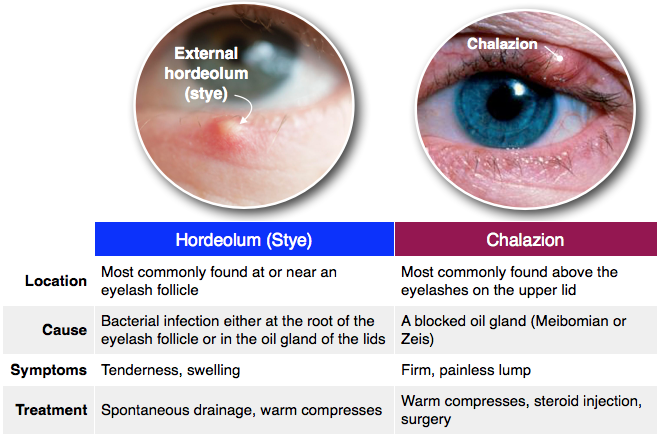External Hordeolum (Stye)
Introduction
A hordeolum (stye) is an acute, localized swelling of the eyelid that may be external or internal and usually is a pyogenic (typically staphylococcal) infection or abscess.
Most hordeola are external and result from obstruction and infection of an eyelash follicle and adjacent glands of Zeis or Moll glands. Follicle obstruction may be associated with blepharitis. An internal hordeolum, which is very rare, results from infection of a meibomian gland. Sometimes cellulitis accompanies hordeola.

Symptoms
- Tearing
- Photophobia
- Foreign body sensation
- Pain
- Redness
- Edema localized to posterior tarsal conjunctival surface
- If severe fever and chills accompany
Signs
Inspection of the tarsal conjunctiva shows a small elevation or yellow area at the site of the affected gland. Later, an abscess forms. . Typically, a small yellowish pustule develops at the base of an eyelash, surrounded by hyperemia, induration, and diffuse edema. Within 2 to 4 days, the lesion ruptures and discharges material (often pus), thereby relieving pain and resolving the lesion. Spontaneous rupture is rare; however, when it does occur, it usually occurs on the conjunctival side of the eyelid and sometimes erupts through the skin side. Recurrence is common.

Diagnosis
Clinical assessment
Diagnosis of hordeola is clinical; however, during the first 2 days, they may be clinically indistinguishable with chalazion. If the chalazion or hordeolum lies near the inner canthus of the lower eyelid, it must be differentiated from dacryocystitis and canaliculitis, which can usually be excluded by noting the location of maximum induration and tenderness (eg, eyelid for a chalazion, under the medial canthus near the side of the nose for dacryocystitis, and over the punctum for canaliculitis).

Differential Diagnoses
- Basal Cell Carcinoma
- Pneumo-orbita (rare)
- Preseptal Cellulitis
- Sebaceous Gland Carcinoma
- Squamous Cell Carcinoma, Eyelid
Treatment
Oral antibiotics (for hordeola)
Hot compresses for 5 to 10 minutes 2 or 3 times a day can be used to hasten resolution of external hordeola.
An external hordeolum that does not respond to hot compresses can be incised with a sharp, fine-tipped blade.
Systemic antibiotics (eg, dicloxacillin or erythromycin 250 mg orally 4 times a day) are indicated when preseptal cellulitis accompanies a hordeolum.
Treatment of an internal hordeolum is oral antibiotics and incision and drainage if needed. Topical antibiotics are usually ineffective.
Reference: AK KHURANA, MERCKS MANUAL





